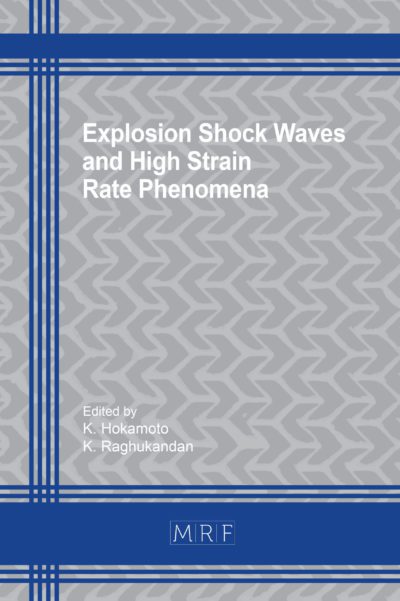–
A numerical approach to investigate the influence of cutting fluid on tool wear in machining AISI 1045 steel
METHON Grégory, COURBON Cédric, ESPINOUX Frédéric, FRELECHOUX Richard, RECH Joël
download PDFAbstract. The proposed work presents the development of a numerical model to take into account cutting fluids when turning of an AISI 1045 steel with a TiN coated tool. At this stage, the study considered the impact of a cutting fluid only based on its thermal properties and ability to reduce friction. Three heat exchange scenarios were explored: dry machining (h = 20 W.m-2.K-1), use of a straight oil lubrication with low pressure (h = 200 W.m-2.K-1) and cooling with an emulsion based lubrication (h = 1000 W.m-2.K-1). Regarding friction, three levels of static friction (µs = 0.3, 0.5 and 0.7) have been considered. Following an analysis of thermomechanical loads (stress, sliding speed, and temperature) exerted on the tool, a Usui wear law was employed for each case to simulate cutting tool wear. Results indicate that friction exerts a significant impact compared to the convection coefficient.
Keywords
Numerical Simulation, Cutting Fluid, Tool Wear, Friction, Convection
Published online 4/24/2024, 10 pages
Copyright © 2024 by the author(s)
Published under license by Materials Research Forum LLC., Millersville PA, USA
Citation: METHON Grégory, COURBON Cédric, ESPINOUX Frédéric, FRELECHOUX Richard, RECH Joël, A numerical approach to investigate the influence of cutting fluid on tool wear in machining AISI 1045 steel, Materials Research Proceedings, Vol. 41, pp 2113-2122, 2024
DOI: https://doi.org/10.21741/9781644903131-233
The article was published as article 233 of the book Material Forming
![]() Content from this work may be used under the terms of the Creative Commons Attribution 3.0 license. Any further distribution of this work must maintain attribution to the author(s) and the title of the work, journal citation and DOI.
Content from this work may be used under the terms of the Creative Commons Attribution 3.0 license. Any further distribution of this work must maintain attribution to the author(s) and the title of the work, journal citation and DOI.
References
[1] S. M. Athavale and J. S. Strenkowski, “Finite element modeling of machining: From proof-of-concept to engineering applications,” Mach. Sci. Technol., vol. 2, no. 2, pp. 317–342, 1998. https://doi.org/10.1080/10940349808945674
[2] F. Klocke, T. Beck, S. Hoppe, T. Krieg, N. Müller, T. Nöthe, H-W. Raedt, K. Sweeney, “Examples of FEM application in manufacturing technology,” J. Mater. Process. Technol., vol. 120, no. 1–3, pp. 450–457, 2002. https://doi.org/10.1016/S0924-0136(01)01210-9
[3] W. Grzesik, M. Bartoszuk, and P. Nieslony, “Finite element modelling of temperature distribution in the cutting zone in turning processes with differently coated tools,” J. Mater. Process. Technol., vol. 164–165, pp. 1204–1211, 2005. https://doi.org/10.1016/j.jmatprotec.2005.02.136
[4] J. Rech, A. Giovenco, C. Courbon, and F. Cabanettes, “Toward a new tribological approach to predict cutting tool wear,” CIRP Ann., vol. 67, no. 1, pp. 65–68, 2018. https://doi.org/10.1016/j.cirp.2018.03.014
[5] A. Giovenco, “Contribution à la simulation numérique de l’usure des outils de coupe”, PhD Thesis Ecole Centrale de Lyon, 2018.
[6] C. Courbon, T. Mabrouki, J. Rech, D. Mazuyer, E. D’Eramo, “On the existence of a thermal contact resistance at the tool-chip interface in dry cutting of AISI 1045: Formation mechanisms and influence on the cutting process”, Applied Thermal Engineering, vol. 50, no. 1, pp. 1311-1325, 2013. https://doi.org/10.1016/j.applthermaleng.2012.06.047
[7] S. P. F. . Jaspers and J. . Dautzenberg, “Material behaviour in conditions similar to metal cutting: flow stress in the primary shear zone,” J. Mater. Process. Technol., vol. 122, no. 2–3, pp. 322–330, Mar. 2002. https://doi.org/10.1016/S0924-0136(01)01228-6
[8] V. M. Luchesi and R. T. Coelho, “Experimental investigations of heat transfer coefficients of cutting fluids in metal cutting processes: Analysis of workpiece phenomena in a given case study,” Proc. Inst. Mech. Eng. Part B J. Eng. Manuf., vol. 226, no. 7, pp. 1174–1184, 2012. https://doi.org/10.1177/0954405412442459
[9] S. Kurgin, J. M. Dasch, D. L. Simon, G. C. Barber, and Q. Zou, “Evaluation of the convective heat transfer coefficient for minimum quantity lubrication (MQL),” Ind. Lubr. Tribol., vol. 64, no. 6, pp. 376–386, 2012. https://doi.org/10.1108/00368791211262516
[10] J. Rech, P. J. Arrazola, C. Claudin, C. Courbon, F. Pusavec, and J. Kopac, “Characterisation of friction and heat partition coefficients at the tool-work material interface in cutting,” CIRP Ann. – Manuf. Technol., vol. 62, no. 1, pp. 79–82, 2013. https://doi.org/10.1016/j.cirp.2013.03.099
[11] E. Usui, T. Shirakashi, and T. Kitagawa, “Analytical Prediction of Three Dimensional Cutting Process—Part 3: Cutting Temperature and Crater Wear of Carbide Tool,” J. Eng. Ind., vol. 100, no. 2, p. 236, 1978. https://doi.org/10.1115/1.3439415
[12] E. Usui, T. Shirakashi, and T. Kitagawa, “Analytical prediction of cutting tool wear,” Wear, vol. 100, no. 1–3, pp. 129–151, 1984. https://doi.org/10.1016/0043-1648(84)90010-3
[13] K. Maekawa, T. Kitagawa, T. Shirakashi, and E. Usui, “Analytical Prediction of Flank Wear of Carbide Tools in Turning Plain Carbon Steels (Part 1)- Characteristic Equation of FIank Wear,” Bull. Japan Soc. Precis. Eng., vol. 23, no. 2, pp. 126–133, 1988.
[14] K. Maekawa, T. Kitagawa, T. Shirakashi, and E. Usui, “Analytical prediction of flank wear of carbide tools in turning plain carbon steel. Part 2. Prediction of flank wear,” Bull. Japan Soc. Precis. Eng., vol. 23, no. 2, pp. 126–133, 1989.
[15] F. Klocke and P. Frank, “Simulation of tool Wear in hard turning,” Proceeding 9th CIRP Int. Work. Model. Mach. Oper., 2006.
[16] Y. C. Yen, J. Söhner, B. Lilly, and T. Altan, “Estimation of tool wear in orthogonal cutting using the finite element analysis,” J. Mater. Process. Technol., vol. 146, no. 1, pp. 82–91, 2004. https://doi.org/10.1016/S0924-0136(03)00847-1
[17] N. Senthilkumar and T. Tamizharasan, “Effect of Tool Geometry in Turning AISI 1045 Steel: Experimental Investigation and FEM Analysis,” Arab. J. Sci. Eng., vol. 39, no. 6, pp. 4963–4975, 2014. https://doi.org/10.1007/s13369-014-1054-2














